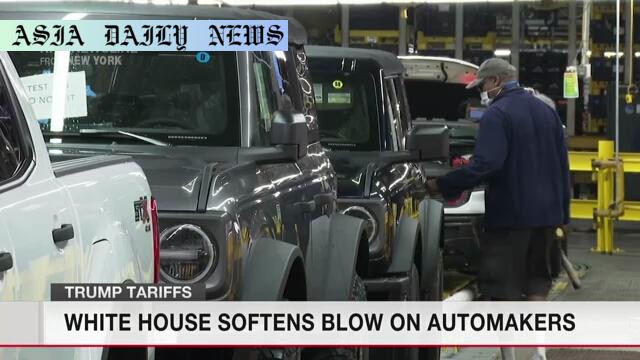Tariffs: Trump announced relaxed automobile tariffs to aid manufacturing in the US, ensuring smoother transitions for automakers.

Introduction: Understanding the Tariff Policy Shift
President Donald Trump has recently announced adjustments to the automobile tariff policy aimed at easing the financial burden on automakers. This decision comes amid growing concerns about the negative implications of a 25% tariff on foreign-made cars and auto parts, which was imposed earlier this month. Under the revised plan, automakers will be reimbursed for some of the tariffs paid on foreign components for a limited time. The new policy is structured as a temporary offset, starting with 3.75% of the sticker price in the first year, dropping to 2.5% in the second year, and entirely phased out by the third year.
The Economic Significance of Relaxed Tariffs
The goal of this policy adjustment is twofold: to alleviate the immediate pressure on automakers and to incentivize manufacturing within the United States. Automakers have consistently raised concerns about the broader fallout of these tariffs, warning they could drive up prices, reduce competitiveness, and limit sales growth. This new measure offers an opportunity for companies to adjust operations, allowing them to transition without facing as severe penalties for relying on imported parts in the short term.
Reactions from the Automotive Industry
While this move has been welcomed as a gesture of goodwill, it has stirred mixed reactions in the automotive sector and beyond. Some stakeholders view it as a necessary compromise, acknowledging it as a proactive way to stimulate domestic production. However, others are skeptical about its effectiveness, arguing it might not adequately counterbalance the challenges posed by the overarching 25% tariff. Given the competitive nature of global markets, automotive leaders emphasize the need for broader strategic planning rather than solely relying on temporary relief initiatives.
The Long-Term Implications for Manufacturing
Over time, this policy adjustment may result in a significant shift in how and where cars and their components are produced. Automakers face the dual challenge of reconfiguring their supply chains while meeting consumer expectations in a highly price-sensitive market. The administration’s hope is clear: to encourage companies to establish or expand their operations within the United States to minimize reliance on foreign production. However, this approach also brings its own set of challenges, including increased operational costs, potential delays in meeting demand, and the complexities of building a skilled labor force to support the domestic industry.
A Balanced Path Forward
Ensuring a balanced implementation of these changes is essential. While the initial reimbursement plan provides a short-term cushion for automakers, the transition toward localized production must be handled strategically to ensure long-term success. Collaborative efforts between the government and private sector stakeholders will be crucial in fostering innovation, overcoming logistical hurdles, and maintaining the United States’ competitive edge in the global auto market. Overall, this policy represents a critical step in reshaping the future of American manufacturing.
Commentary
Initial Reflections on the Relaxed Tariffs
The announcement of relaxed tariffs by President Trump signals a notable shift in strategy aimed at supporting the domestic automotive industry during a critical transition period. At first glance, the initiative appears to strike a balance between enforcing protective tariffs and recognizing the legitimate concerns of automakers who rely on global supply chains. While the plan’s temporary nature may not offer a permanent fix, it provides a much-needed window for companies to adapt without enduring immediate financial strain.
Challenges and Industry Concerns
However, several questions linger about the policy’s long-term efficacy. For instance, will a reimbursement system truly incentivize local production, or will automakers continue to prioritize global efficiency over domestic expansion? Additionally, the phased nature of the reimbursement could inadvertently apply pressure on smaller players in the market, forcing them to make quick and potentially unsustainable adjustments. The challenges of supply chain disruptions and fluctuating consumer demand during this transition cannot be overlooked.
Looking Ahead with Optimism
That said, this policy could pave the way for meaningful reform in how America approaches manufacturing. By prioritizing domestic investment, the administration has set the stage for addressing long-standing issues related to outsourcing and global competition. For automakers, this is a chance to innovate and rethink processes, ultimately strengthening their resilience in changing markets. While this journey may be fraught with uncertainties, the potential to revitalize American manufacturing is an opportunity worth seizing.


